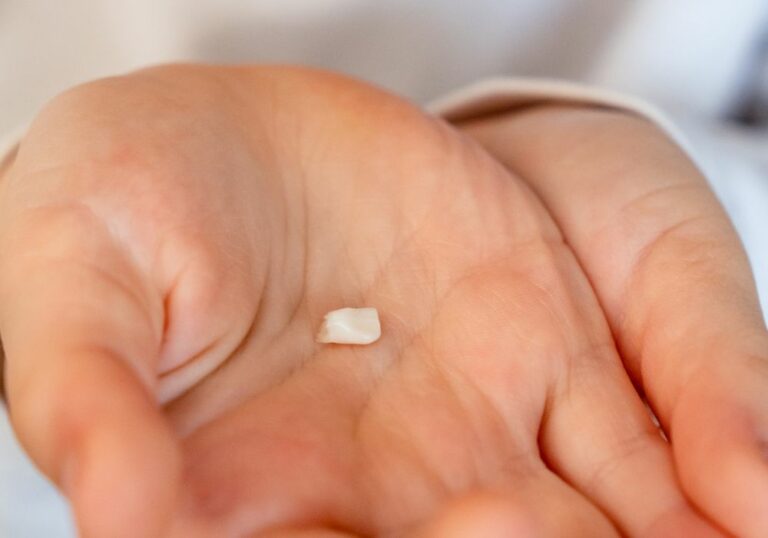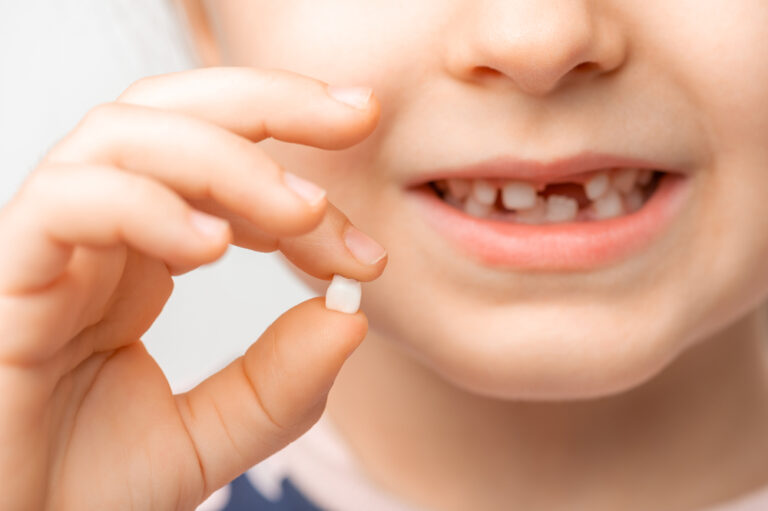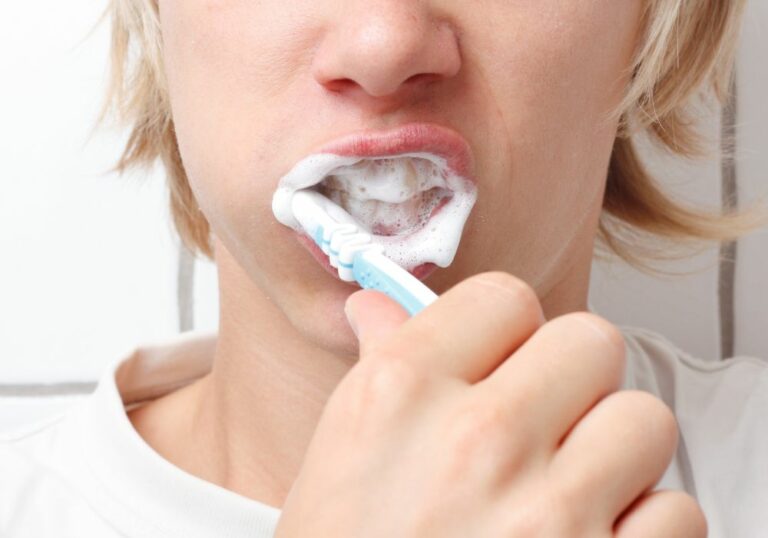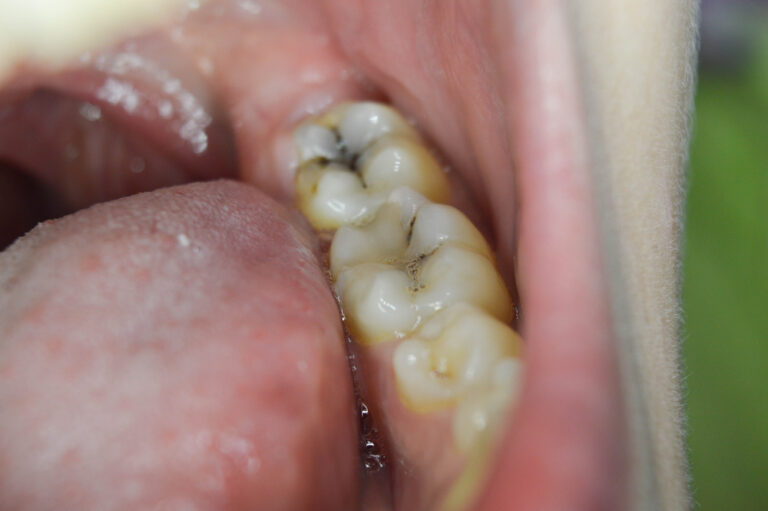Sparkling clean, pearly white teeth are the epitome of a bright, healthy smile. But behind that dazzling grin lies a hidden oral health hazard – plaque. This sticky, colorless film of bacteria constantly forms on teeth and leads to major problems when allowed to build up over time.
Plaque accumulation is the primary cause behind common oral issues like tooth decay, gum disease, tartar deposits, and bad breath. Its barely visible bacterial matrix releases acids that erode tooth enamel, irritate gums, and create an environment for more plaque growth.
While many people use terms like ‘plaque’ and ‘tartar’ interchangeably, they refer to different stages of the same oral health menace. Plaque comprises a soft bacterial mass that gradually hardens into tartar or calculus on teeth. This mineralized plaque cement adheres stubbornly near the gumline and between teeth. It can only be fully removed by a dental professional.
The key question then arises – can you reverse plaque buildup by removing existing deposits and stopping further accumulation? This article provides an in-depth look at the what, why, and how of reversing plaque and tartar buildup for better oral health.
What is plaque and how does it form?
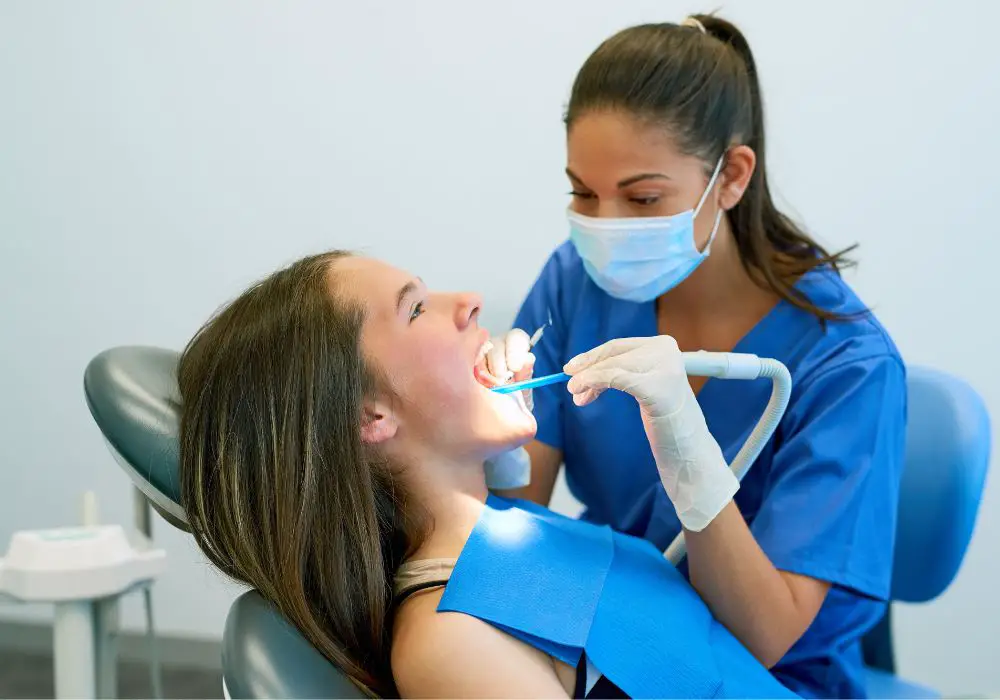
Plaque is a sticky, colorless film of bacteria that constantly forms on everyone’s teeth. Here’s an in-depth look at how plaque develops:
- Plaque starts forming when bacteria present naturally in the mouth combine with saliva and food particles left on the teeth after eating. This creates a breeding ground for plaque.
- The bacteria stick to the pellicle, a thin protein film that covers the teeth soon after brushing. The pellicle provides adhesion for the bacteria.
- More and more bacteria attach to the pellicle and multiply rapidly, forming micro-colonies of plaque. Streptococcus mutans and Lactobacillus are the prime bacteria involved in plaque formation.
- The plaque thickens over time and harbors thousands of bacteria in its sticky matrix. It becomes tougher to remove from teeth.
- The plaque bacteria ferment and metabolize any sugars and starches from food into acids like lactic acid. This releases the plaque’s harmful effects on tooth enamel.
- The plaque also hardens gradually into tartar or calculus, which can only be removed by professional dental cleaning. Tartar provides an ideal surface for further plaque accumulation, so it compounds the problem.
- Thus, plaque is a continuous bacterial process that builds up constantly on teeth. It starts forming again minutes after you brush your teeth or undergo a dental cleaning.
Stages of plaque formation
Plaque passes through several stages as it develops:
Stage 1: Initial colonization
The first stage occurs within 4-12 hours after brushing. Bacteria adhere to the pellicle on tooth surfaces using adhesins on their cell surfaces.
Stage 2: Active attachment phase
More diverse bacteria attach and rapidly multiply into micro-colonies during this stage. Visible plaque starts to appear.
Stage 3: Maturation phase
The plaque increases in volume and thickness, holding bacteria enmeshed in sticky glucans and fibrils. It also calcifies gradually into tartar.
Stage 4: Detachment
Mature plaque may shed from tooth surfaces but will still regrow from bacteria left attached to teeth.
Components of plaque
Plaque comprises:
- Bacteria: Streptococcus mutans converts sugars into plaque acids. Lactobacillus produces acids that maintain plaque pH.
- Salivary proteins: Glycoproteins and proline-rich proteins in saliva help adhesion of plaque bacteria.
- Food debris: Sugars and fermentable carbohydrates are metabolized into plaque acids.
- Biofilm matrix: Plaque bacteria secrete sticky glucan polymers and extracellular DNA that form the scaffolding of plaque.
How does plaque harm teeth?
Plaque affects teeth in various ways:
1. Tooth decay and cavities
- Plaque bacteria metabolize dietary sugars and fermentable carbs into acids like lactic acid.
- These acids diffuse into tooth enamel and dissolve or demineralize it over time. This causes caries or cavities to form.
- The decay can reach the soft pulp inside the tooth, causing severe toothache. Untreated decay leads to dental abscesses and infection.
2. Gingivitis
-
Plaque irritates the gums and provokes inflammation called gingivitis. Signs include:
- Swollen, red gums that bleed easily during brushing and flossing
- Bad breath
- Gum recession, exposing tooth roots
- Increased dental sensitivity
-
Gingivitis is reversible with professional cleaning and improved oral hygiene.
3. Periodontitis
-
If gingivitis is unchecked, it can advance into periodontitis or gum disease:
- The inner gingival epithelium detaches from the tooth surface forming periodontal pockets.
- More plaque and tartar accumulate deep inside these pockets.
- Alveolar bone around tooth roots gets destroyed as bacterial toxins provoke further inflammation.
- This leads to loosening and eventual tooth loss.
4. Tartar buildup
- Hardened plaque calculus deposits especially near the gumline and between teeth.
- Tartar provides more surface area for plaque growth. It hinders removal of new plaque during normal brushing.
- Only a professional dental cleaning can effectively remove tartar down to the root base.
5. Tooth discoloration
- Plaque combined with chromogenic dietary compounds like coffee, tea, and wine can stain teeth yellowish-brown.
- Tobacco smoking also causes tar deposits on teeth that discolor them.
- The roughened plaque surface absorbs these stains readily and makes them tougher to remove by regular brushing.
Can you reverse plaque buildup?
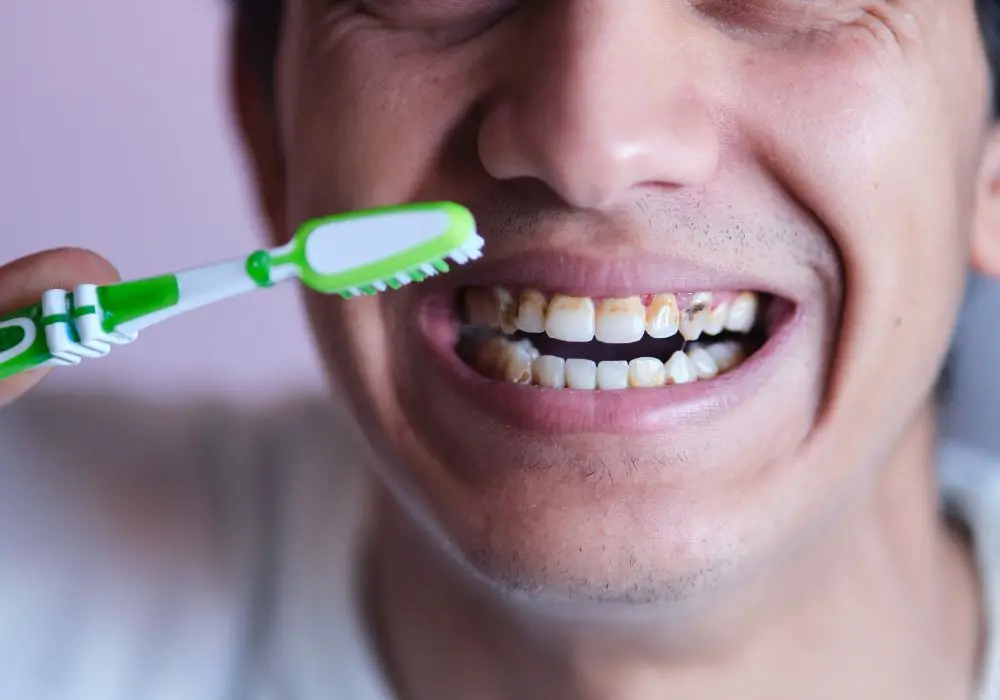
Yes, the plaque formation process can be reversed, especially when caught early before major damage occurs. Here are effective ways to remove existing plaque and prevent its redeposition on teeth:
1. Brushing correctly
- Brush teeth thoroughly twice daily for at least 2 minutes each time. Brushing at night is especially important to remove the day’s plaque growth before sleep.
- Position the toothbrush at a 45-degree angle to the gums. Sweep the bristles back-and-forth gently across all surfaces – front, back, top, and between teeth.
- Use a soft-bristled brush with fluoride toothpaste. Replace your brush every 3-4 months when the bristles start spreading out.
- Take your time during brushing. It takes practice to remove plaque from every nook and corner.
2. Daily flossing
- Floss teeth properly once daily, especially at night. Work the floss up-and-down between teeth to dislodge plaque from close areas missed by brushing.
- Floss also scrapes off plaque sticking below the gumline and around dental fillings or braces.
3. Using antibacterial mouthwashes
- Rinse daily with an antibacterial mouthwash as per instructions. Essential oils and chlorhexidine mouthwashes reduce plaque bacteria for many hours after use.
- Swish energetically for 30 seconds to disperse the mouthwash between teeth and over the tongue.
- This flush effect helps physically remove debris and bacteria.
4. Professional dental cleanings
- Get your teeth professionally cleaned every 6 months. The dentist or hygienist will use dental instruments to meticulously scrape away all hardened tartar above and below the gumline.
- A dental polishing follows to smoothen teeth and remove residual stains and plaque. This provides a ‘clean slate’ to better control plaque regrowth.
5. Dental sealants
- Sealants act as a protective barrier shielding vulnerable chewing surfaces of back teeth from plaque acids and decay. The dentist applies them on deep pits and grooves.
6. Interdental cleaners
- Interdental brushes, floss picks, and oral irrigators help clean tight spaces between teeth that are inaccessible to brushing and flossing.
- Water flossers flush away plaque bacteria via pressurized water pulses aimed at the gumline and between teeth.
7. Dietary changes
- Limit snacking frequency to avoid constant acid attacks on tooth enamel from plaque bacteria.
- Reduce your intake of added sugars and refined carbohydrates that feed these bacteria.
- Rinse the mouth with water after sugary or starchy meals to dilute plaque acids and prevent immediate damage.
8. Smoking cessation
- Smoking allows more plaque to accumulate and makes gum disease worse. Quit smoking to facilitate plaque reversal.
How soon can you see plaque reduction?
You should notice positive changes within 1-2 weeks of improving your oral hygiene habits. Signs that plaque is reducing include:
- Teeth start looking whiter as stains get removed.
- Gums turn pink again and stop bleeding as easily. Inflammation subsides.
- Bad breath diminishes with reduced bacterial load.
- New cavities stop forming as enamel remineralization kicks in.
However, allowing enough time for full plaque reversal is crucial. It requires maintaining your new oral hygiene routine consistently for 2-3 months. Don’t expect overnight results.
Visiting your dentist periodically can help gauge improvements in plaque levels and gum health. They may recommend further preventive treatments like fluoride if required.
Is it possible to remove plaque permanently?
Permanently eliminating all plaque is challenging as it rapidly reforms after brushing. But you can maintain plaque at healthy low levels with diligent daily effort. Here are some tips:
- Stick to twice daily brushing and flossing, focusing especially on the nighttime routine. This controls plaque regrowth overnight.
- Use plaque disclosing tablets or solution weekly. These temporarily stain the plaque pink so you can target removal from all tooth surfaces.
- Rinse with an alcohol-free antibacterial mouthwash daily. Choose one with essential oils or cetylpyridinium chloride for prolonged germ-killing action.
- Chew sugarless gum to stimulate saliva flow after meals and snacks. This neutralizes plaque acids and washes away food debris.
- Follow a non-cariogenic diet low in added sugars and refined carbohydrates. Limit acidic drinks like sodas and citrus juices.
- Get professional cleanings done biannually without fail. Tartar removal prevents recurrence of heavy plaque deposits.
What oral rinses help eliminate plaque?
Numerous oral rinses or mouthwashes can aid in plaque removal:
- Chlorhexidine – This prescription antimicrobial rinse significantly reduces plaque bacteria levels in the mouth and protects against gum disease. However, long-term use can cause tooth discoloration.
- Essential oils – Listerine and other essential oil mouthwashes like thymol provide broad-spectrum plaque control between dental visits.
- Alcohol-containing rinses – These stimulate saliva flow to help clear food debris and buffer plaque acids. But long-term alcohol use could dry the oral mucosa.
- Fluoride rinses – Prescription fluoride rinses promote remineralization and repair of enamel softened by plaque acids.
- Cetylpyridinium chloride (CPC) – CPC shows potent antibacterial, anti-plaque, and anti-gingivitis benefits with regular use.
- Hydrogen peroxide – Dilute solutions of hydrogen peroxide can disrupt plaque biofilm and curb periodontal pathogens when used as daily mouth rinses.
- Oxygenating rinses – These elease oxygen to alter the biofilm environment and hinder plaque metabolism.
- Sodium hypochlorite – Highly diluted bleach solutions may reduce oral bacteria but can irritate oral tissues with frequent use.
Always rinse your mouth after eating and flossing when salivary pH is low. While helpful, oral rinses cannot substitute brushing, flossing, and professional cleanings.
What foods help clean plaque off teeth?
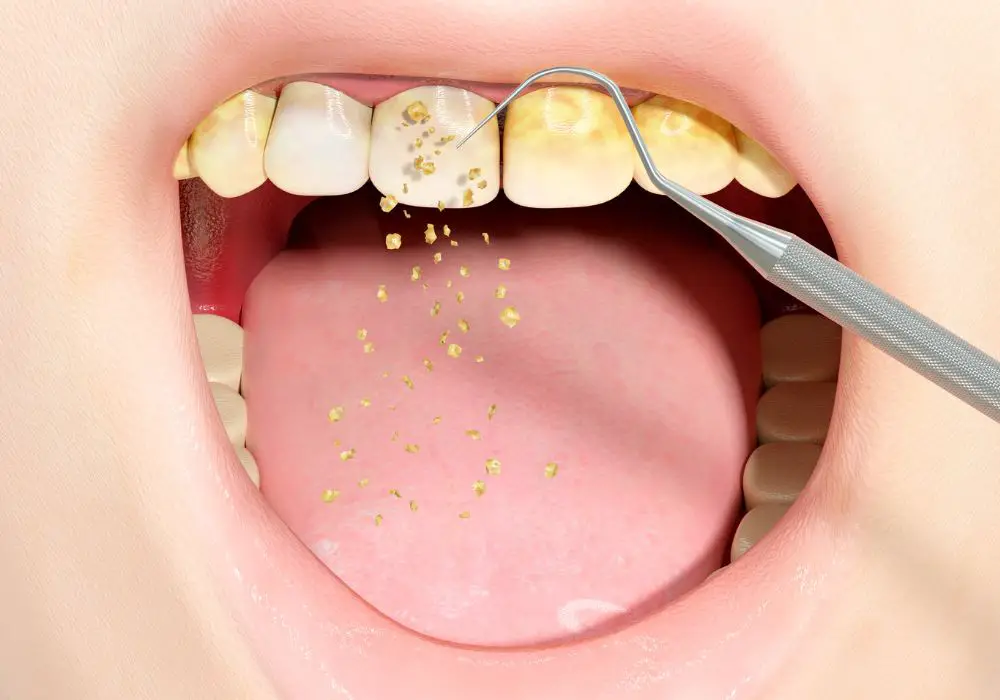
Certain healthy foods naturally help cleanse away bits of soft plaque due to their abrasive texture, antioxidant content, or antimicrobial effects:
- Fruits and vegetables – Fibrous produce like apples, carrots, celery, and broccoli act as natural scrubbing agents on teeth. Chewing also stimulates increased saliva to wash away plaque debris and acids.
- Dairy products – Milk, cheese, plain yogurt contain casein proteins and calcium that promote enamel remineralization and counter plaque acids.
- Nuts and seeds – Almonds, walnuts, sunflower seeds have abrasive surfaces that rub off plaque deposits while chewing.
- Green tea – Rich in antioxidants like epigallocatechin gallate (EGCG) that inhibit plaque bacteria like S. mutans.
- Cranberries – Contain antibacterial compounds like proanthocyanidins that alter plaque biofilm formation and prevent adhesion to teeth.
- Shiitake mushrooms – Their active derivative lentinan shows plaque-reducing and antibacterial benefits.
- Onions & garlic – Possess antimicrobial sulfur compounds like allicin which combat periodontal pathogens in plaque.
- Sugar-free gum – The chewing action stimulates saliva secretion to naturally cleanse teeth of plaque acids and debris after meals or snacks. Xylitol gums further inhibit S. mutans.
Brush and floss post-eating to maximize plaque removal. While they help disrupt the bacterial biofilm, foods cannot replace proper oral hygiene.
Frequently Asked Questions
How do I know if I have a lot of plaque buildup?
You may have significant plaque deposits if you notice:
- Thick yellowish material coating teeth near the gums
- White spots or film on teeth
- Bad breath or unpleasant taste
- Red, swollen gums that bleed when brushing
- Increased tooth sensitivity to hot/cold foods
- Higher incidence of cavities
Plaque disclosure tablets help reveal any hardened plaque missed by normal brushing and flossing. Try using them periodically.
Can plaque eventually cause tooth loss if not removed?
Yes, plaque can definitely cause tooth loss when allowed to accumulate long-term. The bacterial acids destroy enamel and erode softer dentin over time. This causes substantial decay, cavities, or tooth fractures.
Plaque below the gumline also provokes inflammation and advanced periodontal disease. The destruction of supporting tissues makes teeth loose and unsuitable for saving. Professional extraction finally becomes necessary.
Why does plaque keep coming back after a dental cleaning?
Plaque begins reforming within minutes of finishing your dental cleaning due to bacteria left behind in the oral cavity. Saliva proteins also deposit a new pellicle layer on freshly cleaned teeth, inviting bacterial adhesion again.
Good oral hygiene minimizes such rapid plaque regrowth. But some buildup inevitably returns in hard-to-clean areas, necessitating re-cleaning every 6 months.
How long does it take for plaque removal to show improvement in gums?
You should notice less gum inflammation and bleeding within 1-2 weeks as plaque levels reduce. But it takes up to 2-3 months for the gums to fully heal, regenerate tissue lost due to periodontal disease, and reattach more firmly to cleaner teeth.
Can I get rid of plaque on teeth without seeing a dentist?
You can temporarily reduce plaque levels at home through diligent brushing, flossing, rinsing, and lifestyle changes. But for thorough tartar removal and advanced periodontal treatment, seeing a dentist is critical. Else the most adhesive plaque in high-risk areas will persist and continue to harm your oral health.
Conclusion
In conclusion, plaque is a hazardous bacterial biofilm coating teeth that must be constantly controlled. Allowing it to build up leads to major problems like dental cavities, gum disease, bad breath, and eventual tooth loss in the long run.
Fortunately, plaque accumulation can be reversed, especially when caught early. Removing existing plaque and preventing its recurrence relies on good daily homecare habits – proper twice-daily brushing and flossing. This must be partnered with professional cleanings every 6 months and the use of antibacterial oral rinses. Sticking diligently to these best practices will help maintain minimal plaque levels and optimal oral health.

